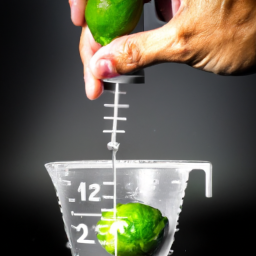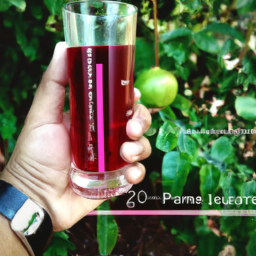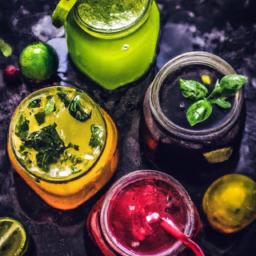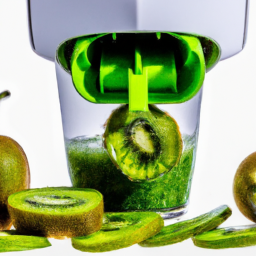As a new parent, I quickly learned the importance of monitoring my baby’s bowel movements. When my infant started experiencing constipation, I decided to try prune juice as a natural remedy. However, I was wondering how long it would take for the prune juice to work.
After doing some research, I discovered that there are several factors that can impact how long it takes for prune juice to work in babies. From the baby’s age and weight to their overall health and diet, there are many things to consider before giving prune juice as a remedy for constipation.
In this article, I will explore the science behind prune juice and its effects on baby’s digestive system, as well as important precautions to take and other home remedies to consider. By the end of this article, you’ll have a better understanding of how long it takes for prune juice to work in babies and how to use it safely and effectively.
Key Takeaways
- Prune juice works as a natural remedy for constipation in babies by softening and easing digestive discomfort.
- The effectiveness of prune juice depends on the severity of constipation, amount given, and age/health of baby.
- Precautions such as consulting with a pediatrician, starting with a small amount, and monitoring for allergic reactions should be taken when giving prune juice to babies.
- The recommended prune juice dosage for babies is 1-2 ounces per day, diluted with equal amount of water to prevent diarrhea.
Understanding Constipation in Babies
Do you know that constipation is a common issue for babies and can cause discomfort and pain? As a parent, it’s important to understand your baby’s bowel movements to know when they are constipated.
Infant constipation occurs when your baby has difficulty passing stool or has infrequent bowel movements. This can happen due to a variety of reasons such as changes in diet, dehydration, or the introduction of solid foods.
One of the causes of infant constipation is the slow movement of stool through the digestive system. This can happen when babies are not getting enough fluids, or when they start eating solid foods. Another cause is a lack of physical activity, which can slow down digestion. Sometimes, certain medications or medical conditions can also cause constipation in babies.
Understanding the causes of infant constipation can help you prevent it from happening and identify it early.
Now, let’s talk about how prune juice works to relieve constipation in babies.
How Prune Juice Works
Prune juice is like a magic potion, quickly softening and easing digestive discomfort in infants. The natural sugars and fiber in prune juice work together to promote bowel movements, making it an effective and safe remedy for constipation.
Prune juice benefits babies by providing relief from pain and discomfort caused by constipation, without the need for harsh laxatives or medications. However, it’s important to remember that not all babies will respond to prune juice in the same way. Some may require more or less, while others may not respond at all.
It’s also important to consider prune juice alternatives, such as increasing fiber and water intake, gentle abdominal massages, and adjusting feeding schedules. Factors that impact how long it takes for prune juice to work include the severity of constipation, the amount of prune juice given, and the age and overall health of the baby.
Factors That Impact How Long It Takes for Prune Juice to Work
It’s crucial to consider alternative remedies for constipated infants, as the effectiveness of prune juice can vary depending on factors like severity of discomfort, intake amount, and overall health.
Here are some factors that may impact how long it takes for prune juice to work in babies:
- If your baby is mildly constipated, prune juice may work within a few hours. However, if your baby is severely constipated, it may take a few days for prune juice to take effect.
- The recommended prune juice dosage for babies is 1-2 ounces per day. If you give your baby too much prune juice, it may cause diarrhea or stomach upset, which can further worsen the constipation.
- If your baby has an underlying medical condition that affects their digestive system, prune juice may not be as effective. It’s important to consult your pediatrician before giving your baby prune juice or any other home remedy.
Considering these factors can help you determine whether prune juice is the right choice for your constipated baby. However, there are precautions you should take before giving prune juice, such as checking with your doctor first and starting with a small amount.
Precautions to Take Before Giving Prune Juice
Before giving prune juice to my baby, I consulted with my pediatrician and discussed the appropriate dosage. It’s important to introduce prune juice gradually, starting with a small amount mixed with water and increasing slowly.
I also made sure to watch for any allergic reactions, such as rashes or difficulty breathing, and stopped giving prune juice immediately if any symptoms appeared.
Consult with Pediatrician
When you talk to your pediatrician about your baby’s digestive issues, they can provide guidance on the best course of action for your little one’s health and comfort. Pediatrician consultation is essential to ensure that your baby receives professional advice and medical attention.
Your pediatrician can evaluate your baby’s health and determine if prune juice is the right solution for their digestive problems. They can advise you on the appropriate amount of prune juice to give your baby and how often to administer it. They may also recommend alternative remedies or medications, depending on the severity of your baby’s constipation.
It’s important to follow your pediatrician’s advice to prevent any adverse effects on your baby’s health. By consulting with your pediatrician, you can ensure that your baby receives the best care and treatment for their digestive discomfort.
With the guidance of your pediatrician, you can introduce prune juice gradually and safely to your baby’s diet. By following their advice and administering prune juice in moderation, you can help alleviate your baby’s constipation and improve their overall digestive health.
Introduce Prune Juice Gradually
As we discussed in the previous section, consulting with a pediatrician is crucial when introducing new foods or drinks to your baby. Once you have received the green light from your pediatrician to give prune juice to your baby, it’s important to introduce it gradually. This gradual introduction can help your baby’s digestive system adjust to the new substance and prevent any discomfort or negative reactions.
It’s important to keep in mind that your baby’s digestive system is still developing, and sudden changes in their diet can cause discomfort or even harm. To prevent this, start by giving your baby a small amount of prune juice, diluted with water, and observe how they react. If they tolerate it well, you can gradually increase the amount of prune juice you provide. A table comparing the benefits and drawbacks of introducing prune juice gradually and all at once is shown below to help you make an informed decision for your baby’s health.
| Gradual Introduction | All at Once | |
|---|---|---|
| Benefits | – Allows baby’s digestive system to adjust slowly – Lessens risk of negative reactions |
– Quicker process |
| Drawbacks | – May take longer to see results – Requires more observation and patience |
– Higher risk of negative reactions – May cause discomfort for baby |
As you introduce prune juice to your baby, keep in mind that every baby is different, and what works for one may not work for another. It’s important to observe your baby closely for any signs of discomfort or allergic reactions. In the next section, we will discuss the signs of allergic reactions to watch out for.
Watch for Allergic Reactions
Keep a close eye on your little one for any signs of an allergic reaction when introducing prune juice to their diet. While prune juice does have numerous benefits for babies, some little ones may be allergic to it. To avoid any potential complications, it’s important to take allergic reaction precautions when giving prune juice to your baby.
Symptoms to watch for include hives, difficulty breathing, swelling of the face, lips, tongue or throat, vomiting, diarrhea, or wheezing. If your little one experiences any of these symptoms, discontinue the use of prune juice immediately and contact your pediatrician. It’s always better to err on the side of caution when it comes to your baby’s health and well-being.
When it comes to giving prune juice to babies, there are a few things to keep in mind. It’s important to introduce prune juice gradually and watch for any allergic reactions, as discussed previously. Additionally, it’s recommended to give your baby no more than 2-4 ounces of prune juice per day, as too much can cause diarrhea.
It’s also important to dilute the prune juice with an equal amount of water before giving it to your little one. With these precautions in mind, prune juice can be a healthy and safe addition to your baby’s diet.
How to Give Prune Juice to Babies
First off, you’ll want to mix a small amount of prune juice with your baby’s milk or formula to avoid any digestive discomfort. It’s recommended to start with 1-2 ounces of prune juice mixed with an equal amount of milk or formula once a day. If your baby tolerates this well and does not experience any adverse effects, you can increase the dose gradually up to 4 ounces per day.
It’s important to note that prune juice alternatives, such as pear or apple juice, should not be used as a replacement for prune juice. These juices do not contain the same amount of sorbitol, which is the natural laxative found in prune juice. Additionally, dosing considerations should be taken into account, especially for younger babies. Always consult with your pediatrician before giving your baby prune juice or any other laxative. With proper dosing and administration, prune juice can help relieve constipation in babies. Moving forward, let’s discuss what to expect after giving prune juice.
What to Expect After Giving Prune Juice
After giving your little one prune juice mixed with milk or formula, you may notice an increase in bowel movements and a softer consistency of their stools. This is because prune juice contains sorbitol, a natural laxative that helps stimulate the digestive system and promote bowel movements.
It’s important to note that while prune juice can be effective in treating constipation in babies, it should only be given in small doses and under the guidance of a pediatrician. Dosage recommendations for prune juice vary depending on the age and weight of your baby. Generally, infants under six months old shouldn’t be given prune juice unless advised by a doctor.
For babies over six months, a small amount of prune juice (about 1-2 ounces) mixed with an equal amount of milk or formula can be given once a day. It’s important to monitor your baby’s response to prune juice and adjust the dosage accordingly. If your baby experiences diarrhea or other adverse effects, stop giving them prune juice and consult with your pediatrician.
As helpful as prune juice can be for relieving constipation in babies, there are other home remedies that can also be effective. Let’s take a look at some other natural ways to help your little one stay regular.
Other Home Remedies for Constipation
As a parent, I understand the discomfort and frustration that constipation can cause in babies. While prune juice can be effective in relieving constipation, there are other home remedies that can also help.
Making dietary changes, such as increasing fiber intake and offering more water, can aid in digestion. Gentle exercise and massage can also promote bowel movements. In some cases, the use of suppositories may be necessary, but it’s important to consult with a healthcare provider before trying them.
Dietary Changes
You should try incorporating more fiber-rich foods into your baby’s diet to help ease constipation and potentially see quicker results from prune juice. Baby nutrition is crucial in maintaining a healthy digestive system.
Foods high in fiber, such as fruits, vegetables, and whole grains, can help soften the stool and make it easier to pass. Some good options to include in your baby’s diet are pears, prunes, peas, and oatmeal. Be sure to introduce new foods slowly and in small amounts to avoid any potential digestive problems.
In addition to adding fiber-rich foods, make sure your baby is getting enough fluids. Dehydration can contribute to constipation, so offer water or breast milk/formula frequently throughout the day. If your baby’s over six months old, you can also offer diluted fruit juice in moderation. Keep in mind that too much juice can cause diarrhea and other digestive problems.
With a healthy diet and adequate hydration, your baby’s digestive system should start functioning properly, making it easier for prune juice to work effectively. Now, let’s move on to the next subtopic about exercise and massage.
Exercise and Massage
Getting your little one moving and giving them a gentle massage can do wonders for their digestive system. Not only does exercise help stimulate bowel movements, but it also promotes overall health and wellbeing in infants.
Here are some benefits of exercise and the importance of infant massage:
-
Improves digestion: Exercise helps move food through the digestive system, reducing the risk of constipation and promoting healthy bowel movements.
-
Enhances muscle development: Regular exercise helps build strong muscles, which are necessary for proper digestion and overall physical development.
-
Boosts mood: Exercise releases endorphins, which can improve mood and reduce stress levels in infants.
In addition to exercise, infant massage is also beneficial for digestion. Massage can help relieve gas, bloating, and constipation, while also promoting relaxation and better sleep.
It’s important to note that infant massage should be done gently and with care, using only a small amount of pressure.
Now, let’s discuss the use of suppositories to relieve constipation in infants.
Use of Suppositories
Using suppositories can be a helpful solution for relieving constipation in infants, as they provide quick and targeted relief. However, it’s important to note that suppository alternatives should be tried first, such as increasing fluids and fiber in the baby’s diet, as well as exercise and massage techniques. Suppositories should only be used as a last resort or under the guidance of a healthcare professional.
It’s also important to be aware of the potential risks associated with the use of suppositories. These can include irritation or injury to the rectum, as well as the possibility of the suppository not being effective or causing further constipation.
If you do decide to use a suppository, it’s crucial to follow the instructions carefully and ensure that the correct dosage is being administered. If you have any concerns or the constipation persists, seek medical advice.
When to Seek Medical Advice
When it comes to constipation, there are times when it’s best to seek medical advice.
Signs of dehydration, persistent constipation, and underlying medical issues are all red flags that require attention.
As someone who wants to take care of my health and my loved ones, I know it’s important to be aware of these warning signs and seek help when necessary.
Signs of Dehydration
Dehydration in babies can cause symptoms such as dry mouth, sunken eyes, and decreased urine output, which is why it’s important to monitor their fluid intake. Here are some signs to look out for to ensure proper hydration and dehydration prevention:
-
Decreased wet diapers: If your baby has fewer than six wet diapers in a day, it may be a sign of dehydration.
-
Dry mouth and throat: If your baby isn’t producing enough saliva and has a dry mouth and throat, it may be a sign of dehydration.
-
Sunken eyes: When your baby’s eyes appear sunken, it may indicate dehydration as the body tries to conserve fluids.
-
Irritability and lethargy: If your baby is more fussy than usual or appears unusually sleepy, it may be due to dehydration.
Monitoring your baby’s hydration is crucial in preventing dehydration. However, if you notice any of these symptoms, seek medical advice immediately.
In the next section, we’ll discuss the issue of persistent constipation in babies. It’s important to note that prune juice, which we discussed earlier, may be helpful in addressing this issue as well.
Persistent Constipation
It can be a real pain in the neck for parents when their little ones struggle with persistent constipation. This condition is characterized by infrequent bowel movements, hard stools, and difficulty passing stool.
Causes of constipation in babies can vary, ranging from formula changes to a lack of water intake. Some treatment options include increasing fiber intake, using stool softeners, and trying prune juice.
Prune juice is a natural remedy that can help relieve constipation in babies. Prunes contain fiber and sorbitol, which can help soften the stool and promote bowel movements. It’s important to note that parents should only give small amounts of prune juice to their babies and not rely on it as a sole solution.
If constipation persists despite dietary modifications and natural remedies, underlying medical issues may be the cause and it’s important to seek medical attention.
Underlying Medical Issues
I’ve discussed persistent constipation in babies in the previous subtopic, and now I’ll delve into the underlying medical issues that may contribute to this condition. Although constipation is common in babies, it can be a symptom of an underlying medical condition that requires medical treatment. Some of these medical conditions include Hirschsprung’s disease, hypothyroidism, and cystic fibrosis. If your baby is experiencing persistent constipation, it’s important to consult a pediatrician to rule out any underlying medical issues.
Apart from medical treatment, alternative therapies can also help alleviate constipation in babies. Here are some alternative therapies that you can try:
- Massage: Gently massaging your baby’s tummy in a circular motion can help stimulate bowel movements.
- Warm bath: A warm bath can help relax your baby’s muscles and promote bowel movements.
- Hydration: Ensuring your baby is well hydrated can help prevent constipation. If your baby is formula-fed, you may try adding a little bit of water to the formula. If your baby is above six months, you may also offer water in a sippy cup.
- Diet: Introducing fiber-rich foods like prunes, pears, and peas can help alleviate constipation.
- Exercise: Encouraging your baby to move around can help stimulate bowel movements.
In the next section, I’ll provide some tips on how to prevent constipation in babies.
Tips for Preventing Constipation in Babies
One simple way to prevent constipation in babies is by incorporating more fiber-rich foods into their diet, like fruits and vegetables. This can help keep their stools soft and easy to pass. Examples of high fiber foods for babies include pureed prunes, pears, and peas. It’s important to introduce these foods gradually and in small amounts to avoid upsetting your baby’s digestive system.
Another helpful technique for preventing constipation in babies is baby massage. This can stimulate their digestive system and promote regular bowel movements. You can gently massage your baby’s abdomen in a clockwise motion, starting from the lower right side and moving up towards the ribs. Be sure to use a gentle touch and avoid pressing too hard.
Always consult with your pediatrician before trying any new techniques or introducing new foods to your baby’s diet.
Frequently Asked Questions
What age can babies start drinking prune juice?
Oh, because you know, babies just love the taste of prune juice. But seriously, it’s recommended to wait until six months old before introducing it. Prune juice alternatives include pears, peaches, and apricots. Benefits of prune juice for babies include aiding digestion and relieving constipation.
Can I mix prune juice with formula or breast milk?
Yes, you can mix prune juice with formula or breast milk. However, there are alternatives to prune juice such as pear or apple juice. It’s important to consult with a pediatrician before introducing any new food or drink to your baby’s diet.
Can I give my baby too much prune juice?
As the saying goes, "Too much of anything is bad."The same applies to prune juice. While it can help with constipation, it’s important to be mindful of prune juice dosage and the risk of an overdose in babies.
How often should I give my baby prune juice for constipation?
I give my baby prune juice once a day for a week, starting with 1 oz and increasing to 2 oz if needed. I also offer water and high-fiber foods. If the constipation persists, I consult my pediatrician. Alternatives to prune juice include pear or apple juice.
Are there any side effects to giving my baby prune juice?
I researched the benefits of prune juice for babies and found it to be effective for constipation. However, excessive prune juice dosage may lead to diarrhea and stomach discomfort. Consult with a pediatrician before use.
Conclusion
In conclusion, as a parent, I understand the worry and stress that comes with your baby experiencing constipation. Prune juice can be an effective and natural remedy to help alleviate constipation in babies. However, it’s important to remember that the time it takes for prune juice to work can vary based on different factors such as age, amount given, and underlying medical conditions.
It’s always important to consult with your pediatrician before giving your baby prune juice or any other home remedy. As the adage goes, "an ounce of prevention is worth a pound of cure."To prevent constipation in babies, it’s important to ensure they’re getting enough fluids, fiber, and exercise. Additionally, if your baby is formula-fed, make sure to choose a formula that contains prebiotics or probiotics to help promote digestive health.
By taking these preventative measures, you can help reduce the likelihood of your baby experiencing constipation and the need for prune juice or other remedies.
Ilana has been a vegan for over 10 years. She originally made the switch for health reasons, but soon found herself becoming more and more passionate about the ethical and environmental implications of a vegan lifestyle. Ilana is the author of The Graceful Kitchen, a blog all about veganism. She loves to cook up delicious and nutritious vegan meals, and share her recipes with others who are interested in leading a cruelty-free life. Ilana is also a strong advocate for using whole foods as the foundation of a healthy diet, and believes that going vegan is one of the best ways to achieve this.










